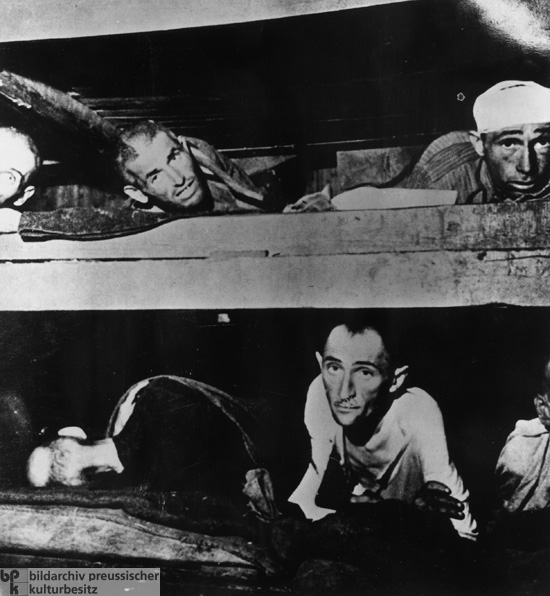













INTRODUCTION | DOCUMENTS | IMAGES | MAPS | EDITOR
|
Starting on April 6-7, 1945, the SS sent approximately 28,000 prisoners from the Buchenwald concentration camp on death marches to the west. According to estimates, around 12,000 to 15,000 died. After SS guards abandoned the camp on April 11, fleeing from approaching U.S. forces, armed members of the prisoners’ resistance group took control. That same day, units of the U.S. Third Army under Lieutenant General George S. Patton reached the compound, where they found around 21,000 weakened and starving survivors, including 1,000 children and young adults. Deeply affected by his visit to the camp, Patton ordered, as a kind of “re-education” measure, 1,000 residents of the nearby city of Weimar to visit the camp and see for themselves the horrors that had taken place there. At a ceremony commemorating the dead on April 19, 1945, camp survivors took the “Buchenwald Oath,” pledging: “We will not stop fighting until the last perpetrator is brought before the judges of the people! Destroying Nazism and its roots is our slogan. Building a new world of peace and freedom is our goal.” After the Soviet military authorities were handed control of the camp, they set up “Special Camp No. 2.” By their own account, the Soviets imprisoned more than 28,400 people in this facility between August 1945 and February 1950, including representatives of the Nazi state and the Nazi party, members of the Hitler Youth, the Waffen-SS, and the police, as well as Wehrmacht soldiers. Around 7,100 inmates died. In 1958, Buchenwald was declared the first anti-fascist national memorial site in the German Democratic Republic.
© Bildarchiv Preußischer Kulturbesitz |
 print version
print version return to image list
return to image list previous image
previous image
